Rubber Flooring VS Vinyl Flooring - What's The Difference
NOVEMBER 10, 2023
Choosing the best flooring material is one of the first steps in home or business place renovations. Everyone wants durable, appealing, and reliable surfacing that won’t stretch the dedicated budget.
Rubber and vinyl are materials that transformed the flooring industry, offering versatile solutions for various settings, from gyms and healthcare facilities to commercial spaces and private properties. While they both appear similar at first glance, we will explore their fundamental differences to help find the best surfacing for your renovation project.
Rubber VS vinyl flooring: let’s unravel the distinctions, similarities, and benefits that set material apart. So, stick around if you’re still battling, should you go with rubber or vinyl flooring, and take notes.
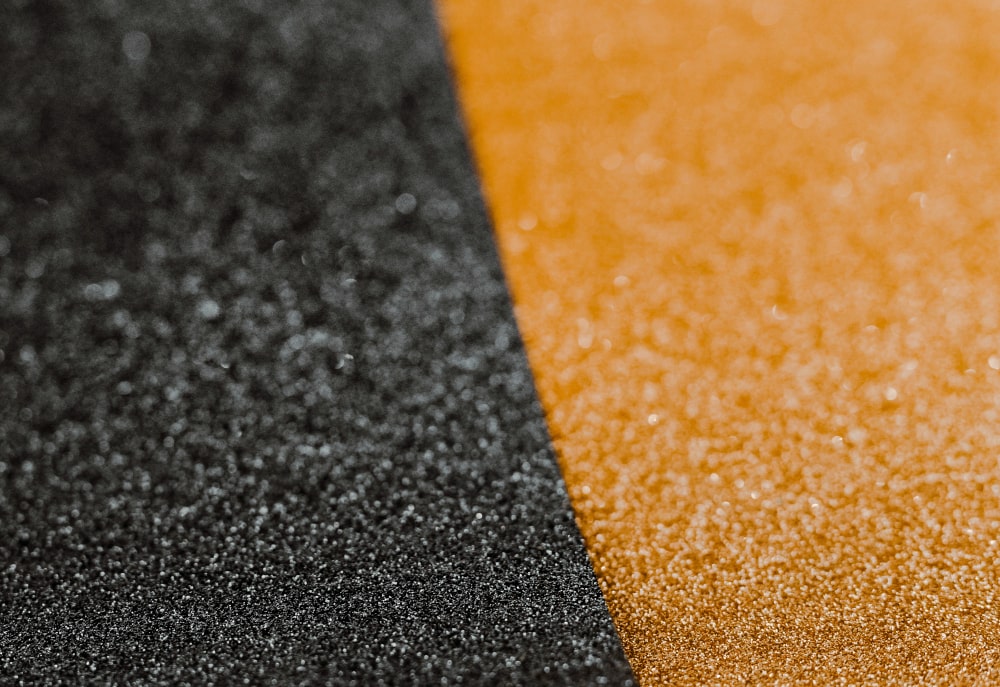
What Is Rubber Flooring?
We’ve all seen rubber surfacing in playgrounds, gyms, and recreational facilities. Rubber is a natural and synthetic elastic material known for its flexibility and resilience. Natural one comes from sap and rubber trees and is widely used in waterproofing and creating elastic bands. On the other hand, synthetic one is manufactured through chemical processes and offers similar capabilities.
How Rubber Flooring Is Made
Here is a simplified rubber flooring manufacturing process:
- Material Selection: The choice between natural or synthetic rubber depends on factors like cost, durability, and environmental considerations. Additionally, many modern flooring companies offer recycled rubber surfacing to help minimize waste.
- Mixing and Vulcanization: You can mix rubber material with additives and colorants to achieve the desired look and feel. The vulcanization process guarantees that the rubber mixture becomes extra resilient.
- Rolling and Cutting: In this stage, the rubber compound is rolled into sheets of various thicknesses. These sheets are later cut into tiles or rolls, which vary in size and shape to suit different spaces.
- Surface Finish: Rubber is a customizable material. You can choose various textures, patterns, and colors to meet aesthetic preferences. Some rubber flooring have a smooth surface, while other may feature a pored-like texture for enhanced slip resistance.
- Installation: Typically, to install rubber floors, you’ll require adhesive, interlocking systems, or loose-lay methods.
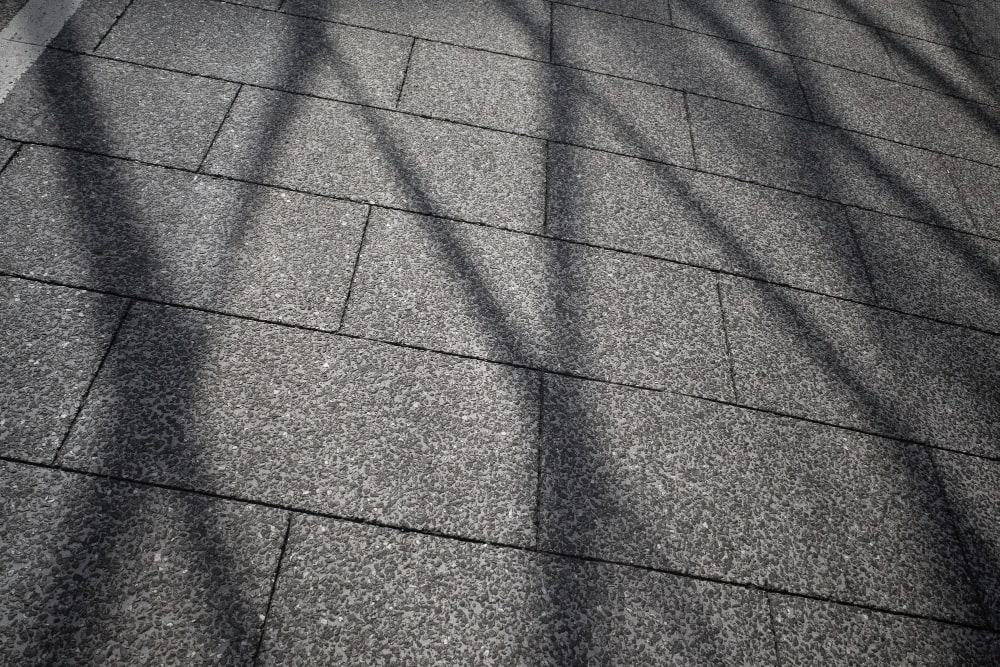
Pros and Cons of Rubber Floor
Let’s weigh the advantages and drawbacks of rubber flooring to help you make an informed decision.
Pros:
- Easy maintenance: Rubber floors are super easy to clean and maintain. Such surfaces require regular sweeping and occasional damp mopping.
- Durability: Rubber has an outstanding lifespan. It’s resistant to severe weather conditions, heavy foot traffic, and wear & tear over time.
- Resilience: It offers superior shock absorption, making it an excellent choice for spaces with kids, aging citizens, or when people are physically active. The American Standards Testing Methods proved that rubber tiles are safe for falls from 6 feet.
- Water-resistant: Rubber is naturally resistant to moisture, making it an excellent option for bathrooms, pool decks, or outdoor areas. Certain rubber surfaces are slip-resistant, keeping people safe and minimizing the risk of falls and trips with drastic consequences.
- Eco-friendly: Some manufacturers use recycled rubber, offering sustainable and environmentally conscious flooring solutions.
Cons:
- Limited aesthetics: Rubber flooring companies offer customizable color and pattern options. Yet, the final look suits better commercial places, outdoor areas, and particular rooms in households.
- Cost: High-quality rubber flooring is relatively expensive, especially compared to vinyl or other budget-friendly options. However, rubber is considered to be a long-term investment.
- Odor: Freshly installed rubber flooring has a distinct odor that typically fades over time.
- Maintenance Products challenges: You should avoid chemical products, as they can be harmful. Additionally, certain rubber types require periodic sealing and waxing to maintain the brand-new look.
Now that we’ve explored rubber flooring let’s turn our attention to vinyl flooring and its unique characteristics.
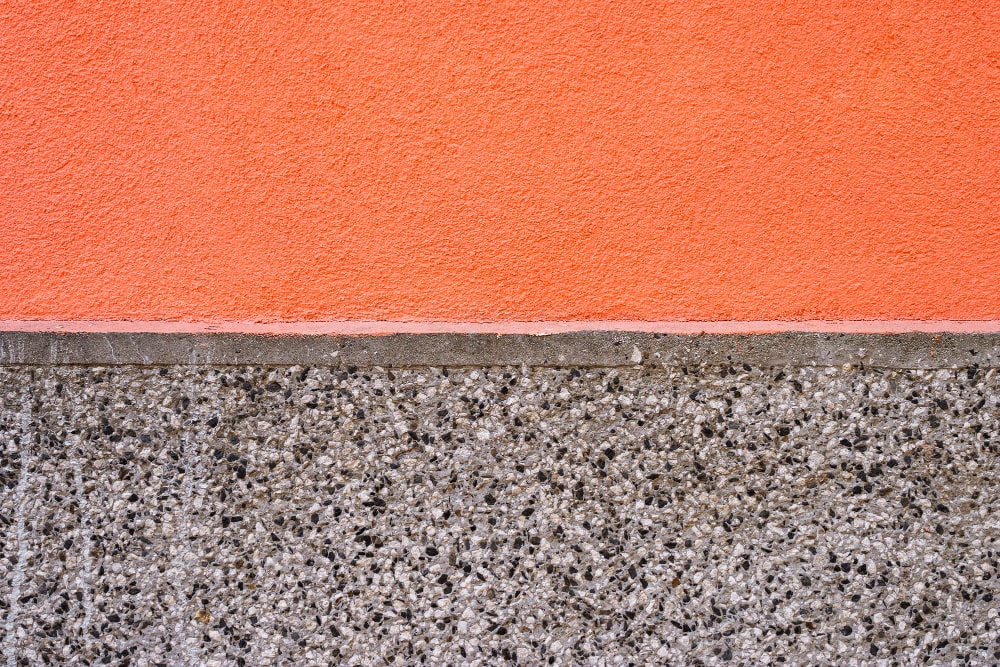
What Is Vinyl Flooring
Vinyl is a versatile and popular surfacing option that’s been on the top of budget-friendly materials for decades. Vinyl is a plastic-made alternative to natural linoleum. Vinyl flooring comes in various forms, including vinyl sheets, tiles, and luxury vinyl planks (LVP). Such versatility and affordable flooring solution works great in commercial and residential settings.
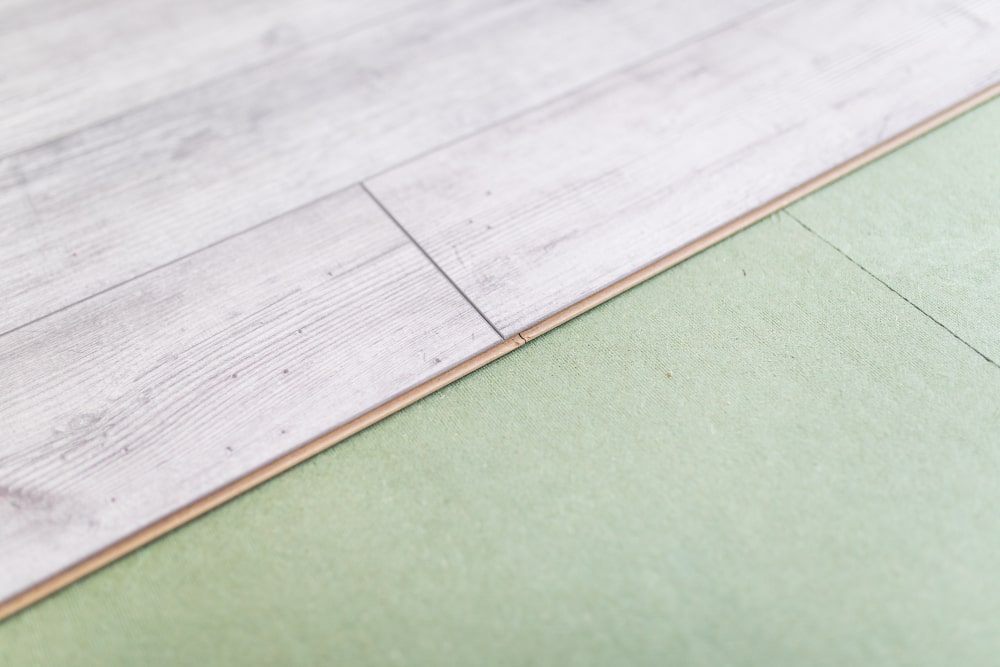
How Vinyl Flooring Is Made
The vinyl flooring manufacture is a complicated process. Here are the simplified key steps:
- PVC resin is mixed with plasticizers and additives for color, durability, and flexibility.
- The vinyl mixture is passed through rollers, resulting in vinyl sheets of needed texture.
- Multiple layers are fused together, including a wear layer for protection, a decorative one for design, and a core one for integrity.
- Finally, the material is cut into sheets, tiles, or plans and installed using a click-and-lock system.
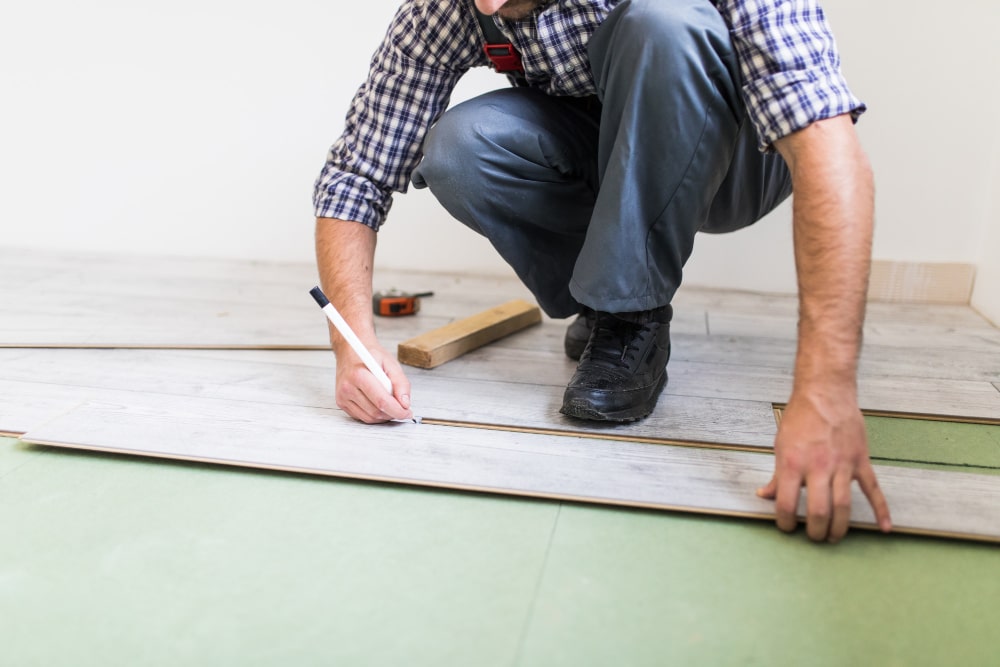
Pros and Cons of Vinyl Floor
Let’s explore the benefits and disadvantages of vinyl flooring.
Pros:
- Affordability: Hands down, among all the flooring types for indoor spaces, vinyl is the most budget-friendly option.
- Durability: Vinyl floors are made to withstand everyday wear and tear. Usually, it has many protective layers that resist scratches and stains.
- Low Maintenance: You’ll require occasional sweep and mop of the floors to keep it looking good.
- Design Variety: Vinyl surfacing offers customizable design options, mimicking wood, stone, tile, and other materials. Such patterns and color diversity allow the use of vinyl in working and living settings.
- Comfort: Vinyl is not as hard as other materials, guaranteeing noise reduction. It’s comfortable to stand and walk on.
Cons:
- Prone to damage: While durable, vinyl flooring can be damaged by sharp objects or heavy furniture.
- Not eco-friendly: Vinyl is a synthetic material made from non-renewable resources. Therefore, its production is harmful to the environment.
- Temperature Sensitivity: Vinyl flooring can expand and contract with temperature changes. It might not be the best option for uncontrolled environments with extreme temperatures.

Ideal Settings for Rubber and Vinyl Flooring
So, what is the most optimal choice of rubber flooring VS. vinyl flooring?
Rubber surfaces are excellent for spaces that require exceptional durability, making them a top choice for high-traffic areas like gyms, healthcare facilities, industrial settings, playgrounds, pool decks, garages, etc. Moreover, rubber’s moisture resistance makes it suitable for bathrooms, laundry rooms, and kitchens.
Vinyl is excellent for residential properties, including a living room, bedroom, entrance, kitchen, etc. Vinyl is a go-to option for commercial indoor spaces and offices. Ultimately, the choice of vinyl rubber flooring depends on the specific demand and design preferences.
